- The priority queue was discussed
in CS171:
This webpage is a brief review of that material....
- Priority queue:
- A data structure where the data item are stored in the order based on some priority field
- The operations that
is allowed on
a priority queue are:
- size() =
return the number of entries in
the priority queue
- isEmpty() =
test if the priority queue
is empty
- insert(k,v) =
insert the entry (k,v)
in the priority queue
(the ordering will
be based on the value of the
key k
- peek() =
return the entry with
the minimum key value
in the priority queue
without removing it
(from the priority queue)
- poll() =
return the entry with
the minimum key value
in the priority queue
and
remove it
from the priority queue
- size() =
return the number of entries in
the priority queue
- Comments:
- The priority queue store
similar entries as
the map that
we have studied
- But: the
operations defined on
a priotity queue is
less powerful than those
for a
map:
- peek() and poll() will only return the entry with the smallest value of the key !!!
Result:
- We can use a
more simpler data structure
called the
heap to achieve
O(log(n))
performance
- The priority queue store
similar entries as
the map that
we have studied
- Note:
- A heap is
not a
Binary search tree
(i.e., the left subtree can contain keys that are larger than the parent, and the right subtree can contain keys that are smaller than the key stored in the parent node).
- A heap is
not a
Binary search tree
- Heap: a binary tree with
the following properties
- The binary tree is
complete:
- All levels of the
binary tree,
except for the last level,
are
completely filled.
- In addition, nodes on the last level of the binary tree are packed to the left
- All levels of the
binary tree,
except for the last level,
are
completely filled.
- The key value k
stored in the nodes of any subtree of the node
(k0.v0)
statifies:
k0 ≤ k
- The binary tree is
complete:
- Examples:
- The is a heap:
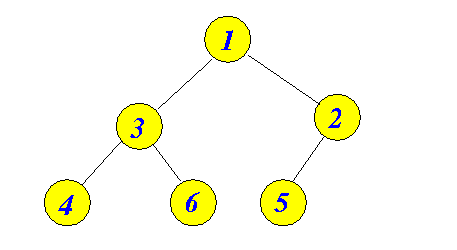
Notice:
- Binary tree is complete
- Key values stored in a subtree are ≤ key value stored in root node of subtree
- The is a not a heap:
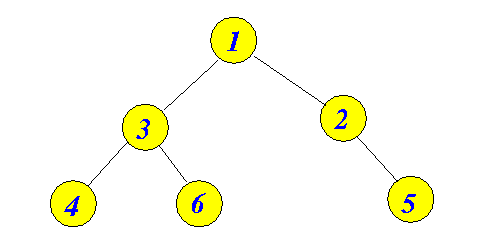
because the binary tree is not a complete tree (not packed to the left)
- The is a not a heap:
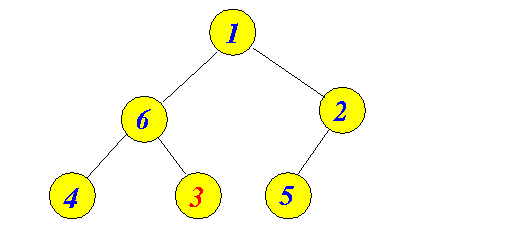
because the key 3 stored in a subtree of the node 6 has a smaller key value
- The is a heap:
- Heap insertion algorithm:
- Insert the new entry into the
left-most free position
on the lowest level
(to perserve completeness)
- "Heapify" using the
filter up
(a.k.a. bubble up)
operation:
current = newly inserted entry while ( current != root ) { parent = current.parent; if ( current.key < parent.key ) { swap( current, parent ); current = parent; } else { break; } }
- Insert the new entry into the
left-most free position
on the lowest level
(to perserve completeness)
- Example 1:
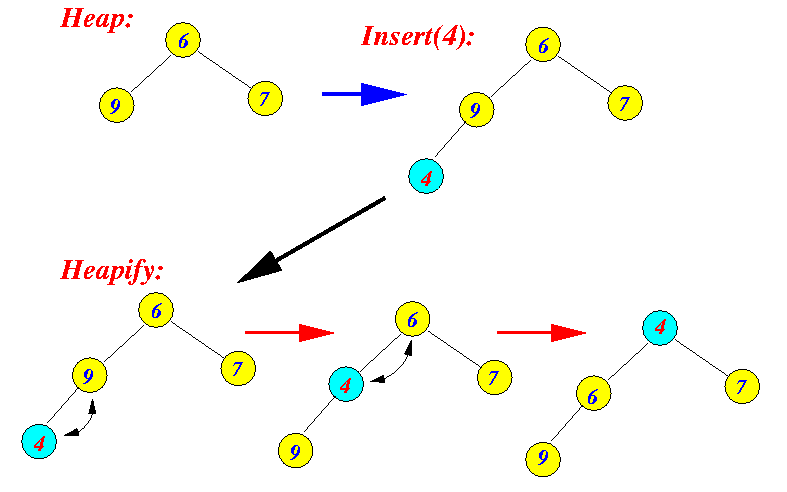
- Example 2:
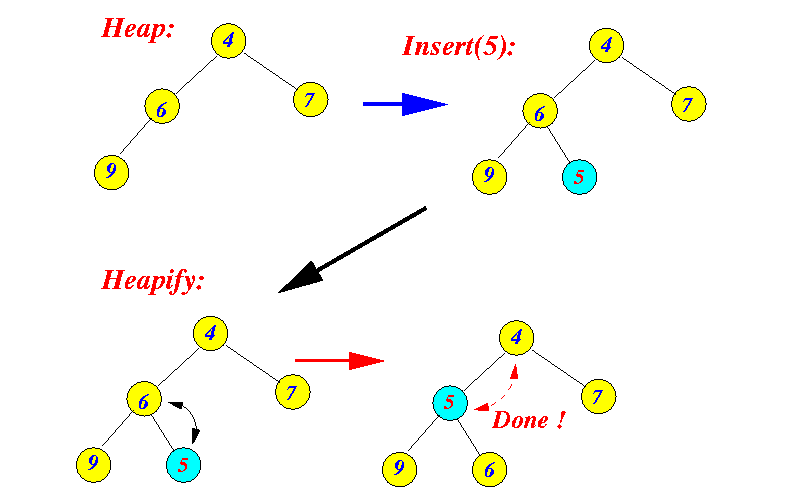
- Fact:
- The poll() method
will always
remove the
root node from
a heap
because:
- The root node has the smallest key value among all the entries stored in the heap !!!
- The poll() method
will always
remove the
root node from
a heap
- Heap deletion algorithm:
- Remove
the root node
- Replace the
root node with the
left-most entry
on the lowest level
(again, to perserve completeness)
- "Heapify" using the
filter down
(a.k.a. bubble down)
operation:
current = root node while ( current != a leaf node ) { min_key = min( left.key, right.key) ; if ( min_key < current.key ) { swap( current, node with min_key ); current = node with min_key; } else { break; } }
- Remove
the root node
- Example:
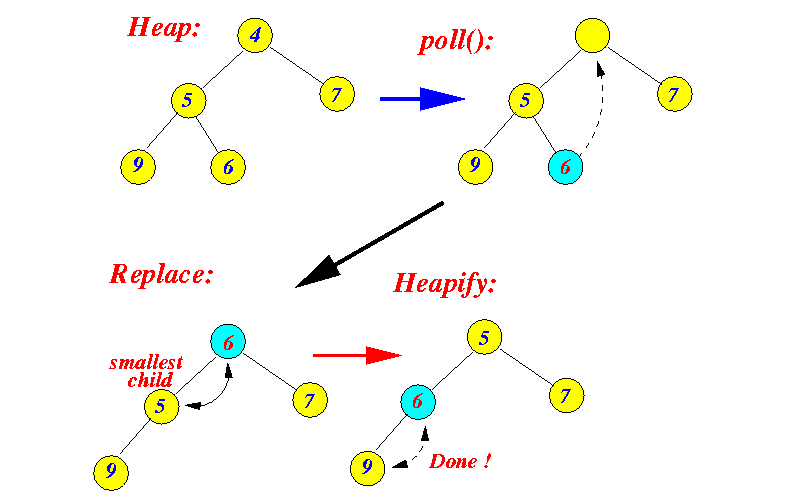
- As discussed in CS171, a heap is
usually implemented as a
array:
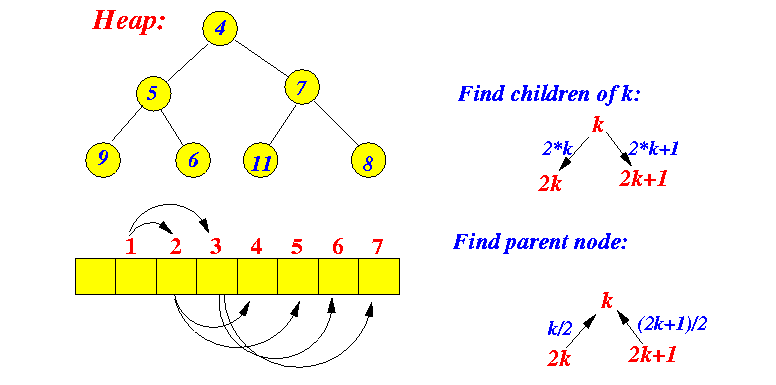
- To find the indices of the
children nodes of
node k, use indices:
2*k and 2*k + 1 - To find the index of the
parent node of
node x, use index:
x/2
- Example Program:
(adapted from the CS171 material)

- The Heap implementation Prog file:
click here
- A test prog file: click here
How to run the program:
- Right click on link(s) and
save in a scratch directory
- To compile: javac TestPQ.java
- To run: java TestPQ
- The Heap implementation Prog file:
click here